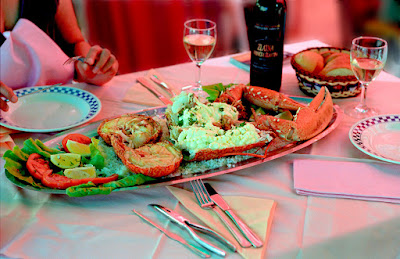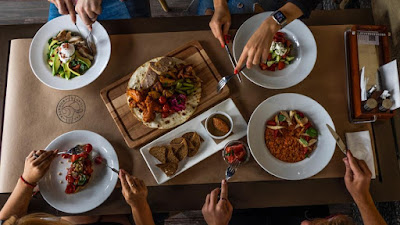Food is a powerful cultural signifier 3
3
READ PART 23. Narratives of ethnic foods and national cuisines
Validating that the cultural role of Food A signifier of country, commentators have argued that now nations areas National flag.
Concurrently, studies carried out by Arjun Appadurai, Carol Helstosky, and Sally Howell have also illustrated how cuisines, particularly National cuisines, are discursively produced by national elites as tools of nation-building In turn. As I have addressed previously, ethnic foods and ethnicity just come To being when put against the grain of the non-ethnic other.
Thus, we need to Explore how Australian and Italian national cuisines have been imagined and how They articulate with the kitchen and foods of the ethnic others with whom they share the same national territory. Italian cuisine and foodways are represented as strong signifiers of national culture and national identities. According to the Italian gatekeepers, The kitchen is integral to the narrative of Italian-ness. Yet, Italy did not become a Unified nation-state until the final quarter of the nineteenth century. Finding Identity markers for nation-building proved a tricky task to accomplish In a geographical territory divided by powerful regional and local identities. According To Thelytoky, the job of Pellegrino Artois was critical in his and Meticulously researched and categorized recipes and foods, producing what was Recognized as the 'language' for a national cuisine that merged Italians around the table.
In a state where powerful regional and local allegiances to products and providing the recently formed nation-state using a signifier of national culture. In Italy, as in post-independence India, cookbooks and the language of cuisine were essential tools of nation-building, albeit not the only one. In this Procedure, the participation of Italian diaspora in promoting Italian foodways Cannot go Especially to the USA, led to a staggering total of nine million Italians - One-quarter of the whole Italian population - living outside Italy from the 1920s.
Again, during the years of Mussolini and after WWII, the exodus increased in the diaspora. Commensality was critical in establishing cultural and social bonds amongst Italian Immigrants at the same time as it encouraged and disseminated the Italian-ethnic Food. It became more of a unifier in the diaspora than it was in Italy. Thought of Italian Food was generated in the interior (Italy) as from the
Outside (diaspora). Sometime over the boundaries of this nation-state, local and Regional differences have been upheld as strong identification markers of Locality and regionalism. They became of secondary significance in the diaspora where The motto that migrants needed to thrive in a foreign land was the priority. Abroad, Differences were set aside to make strong links between diasporic Italians. t, Italian foodways connoted Italian-ness and maintained cultural identities. Ethnic- Italian Food was enabled and became enabling.
The impetus to consume the meals which mamma cooked had a dual impact. On the other hand, its unified immigrant communities around the table promising national Helped entrepreneurial immigrants to Create successful businesses and to an increase was given by the diasporic markets Into a weak Italian market by developing new industries like Italian pasta. The role of food as a powerful signifier of national identity might Begin to Clarify the town of Lucca's dismissal of the foodways of the ethnic-other. In Australia, cultural food has different connotations, but inside Lucca's territorial boundaries, ethnic food destabilized the city's sense of Self and jeopardized Italian-ness. Australia has its particularities.
But a stamped the past as a British colony of Australia Coverage of cultural sameness and white supremacy. Early Food was English Food, with Sunday roast and three veggies. Australian Aboriginal native Foods, eating habits, and cooking methods are yet to be incorporated in everyday food. Likewise, the foodways brought by immigrants during The gold-rush of the nineteenth century just became gradually integrated after a Process of 'domestication' and regulation based on the standards and codes Dependent on the hegemonic establishment. The 1950s' Waves of government-sponsored southern European immigrants coming to Australian beaches, found their foodways belittled and often referred to as WOG meals.
But, their presence and visibility contributed to slow changes in Cultural attitudes to ethnic foods, which were being partly introduced by The increasingly powerful advertising industry, actively sponsoring new ingestion Signifiers against which identification procedures were generated. Concurrently, the increasing number of Australians traveling abroad in the 1970s stimulated Growing tolerance and fascination for the culture and eating habits of cultural others. From the 1980s, WOG food became trendy. Greek, stylized, Italian, Asian, and Lebanese foods became acceptable and even desirable. A direct result of changes in Australian society conducive to new the societal Had changed. So had its constitutive intelligentsia accountable for challenging.
The conditions in which national identities were being devised. The new aspirational Middle-class was partially, but importantly, constituted by second-generation Australian-born and increased people, with strong links to the ethnic cultures of They, were outsiders. They were incorporated and educated citizens, empowered by cultural capital. This new creation could practice cultural politics and title cultural signifiers That re-shaped Australian national identities and culture. Culturally sanctioned, These folks could replicate their hybrid culture, legitimize it, affirm it Australian food has been re-defined into something brand new, inclusive of what was Formerly recognized as the ethnic-other—the cultural proficiency in understanding otherness.
Conclusion
This comparative study highlights the way collective identities can be. They can be thought of as essential Immutable and harnessed by convention. Alternately identities can be Conceptualized as contextual, shaky, but lively points of positioning always Becoming something new that can be translated into new kinds of culture. The town of Lucca's institutional powers were aggressively holding on to the Concept of a unified and homogeneous national culture. They forgot that no nation-state Is represented by one ethnicity and that national culture is not merged and Pure.
As Renan observed, 'the leading countries in Europe are nations of essentially mixed blood: Italy is the country where ... Gaul's, Etruscans, Pelagianism, and Greeks, Not to mention many other components, intersect in an indecipherable mixture'. Thus, considering Italian foodways as coherent, unified, and pristine does not Acknowledge the many stories, peoples, places, practices, and recipes that have evolved to make Italian Food what it is today.



Comments